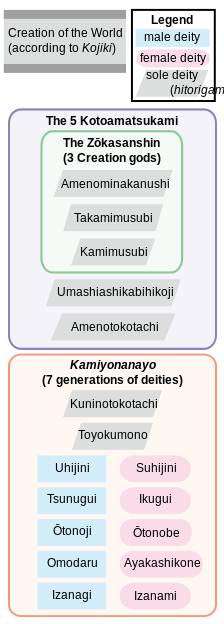
Amatsukami (Japanese: 天津神, 天つ神, 'Kami of heaven') is a category of kami in Japanese mythology. Generally speaking, it refers to kami born in, or residing in, Takamagahara.
Amatsukami is one of the three categories of kami, along with their earthly counterpart Kunitsukami (国津神, 国つ神), and yaoyorozu-no-kami (八百万の神).[1]: 56
In the time of Ninigi the ownership of land was moved from Kunitsukami to Amatsukami.